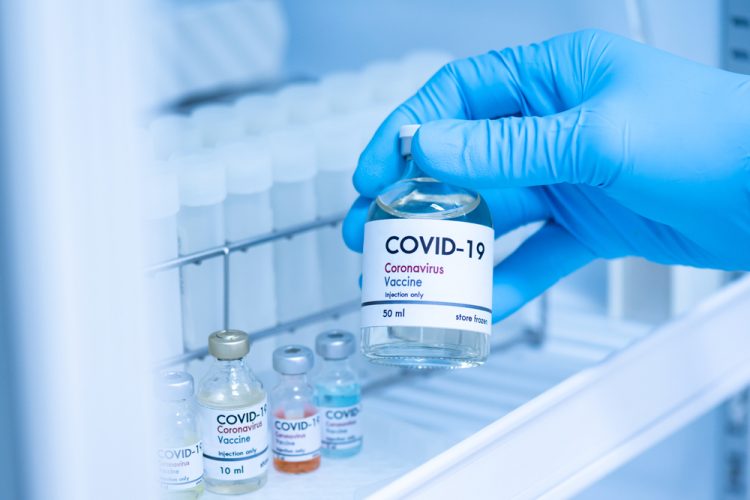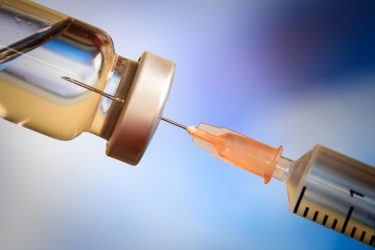The extra mile: preparing a supply chain for a COVID-19 vaccine
Posted: 29 June 2020 | Dr Madhav Durbha (LLamasoft) | No comments yet
Dr Madhav Durbha explains the importance of implementing and ensuring stable supply chains to deliver potential COVID-19 vaccines.


COVID-19 has placed huge stress on the global population, both emotionally and financially. In the UK alone, official figures suggest we are approaching 50,000 deaths1 as a result of the virus. Dealing with such a tragic loss of life has been difficult for individuals and governments alike.
To effectively deal with COVID-19, much hope has been placed on creating a vaccine, which could significantly slow the spread of the virus. On average, it takes more than 10 years to bring a vaccine to the international market. However, during the times of desperate need we find ourselves in now, the process can be accelerated to a matter of months.2 In the UK, there have been suggestions that a vaccine could be ready for 30 million Britons by September.3
However, while the creation of a vaccine will clearly be momentous, it is not the final step. While AstraZeneca says it will be able to supply two billion doses4 of the vaccine when it is ready, providing a vaccine both nationally and internationally presents a whole other challenge in itself. It is, however, a challenge we can prepare for.
Bumps in the road
By taking advantage of simulation technology, organisations can virtually test their supply chain strategy”
The road to creating and supplying an effective vaccine can be a long journey fraught with disruptions and false dawns. The process could cost anywhere from £160 million to £400 million5 and even then, there remains a 94 percent chance of failure.6 It is for this reason that it usually takes many years to bring a vaccine to international market.
However, this is not to say it is impossible to do it much faster. During the Zika outbreak in 2015, a vaccine was developed and ready for testing within seven months. Pharmaceutical companies across the world are currently receiving significant financial backing from governments in their efforts to create a COVID-19 vaccine. Therefore, a similar timescale as to 2015 is not unfeasible.
Nevertheless, financial backing or not, there is no fool-proof method for developing a vaccine and the timeframe remains uncertain. This does not, however, prevent us from planning for its arrival. While the vaccine is being researched and developed, we must prepare and perfect a global supply chain strategy to ensure it reaches those most in need in both a timely and safe manner. Suppliers must not be caught on their heels once a breakthrough has been made.
Preparation is key
From history, we already know that temperature control is a major challenge when it comes to creating an effective vaccine supply chain. Accidental freezing of vaccines occurs in 37 percent of facilities in lower-income countries and 33 percent of facilities in wealthier countries.7 When it comes to saving lives, these margins can be decisive.


Credit: IKON IMAGES / JOSH MCKIBLE / SCIENCE PHOTO LIBRARY
Fortunately, we also know that vaccines must be stored in an optimal temperature of between 2°C to 8°C. They must be stored in these conditions all the way from manufacturing through to the immunisation of a patient. To achieve this, it is vital to reduce the lead time between production and point of consumption. One method that has been tried and tested successfully is the use of drones in parts of the world where such usage is permitted. One medical product delivery company, Zipline, has reduced the transportation time of key medicines from several days to two hours, saving thousands of lives in Rwanda and Ghana. While this may not be necessary in major cities, it is particularly effective when supplying medicines across challenging terrains, such as mountains.
There are, of course, other considerations to take into account as well. For example, it is very likely that demand for the vaccine will outstrip supply, at least in the immediate term. It will therefore be vital to identify the most vulnerable segments of the population, ensuring that they receive the vaccine as a priority. In addition to supplying the actual vaccine, syringes, needles and peripherals also need to be taken into consideration when planning the supply chain. These are often delivered by different parties but are just as important as the vaccine itself and must be supplied in abundance so the dose can be administered safely.
Clearly there is a lot that must be taken into consideration and streamlined effectively. Knowing this is one thing, but how can companies and organisations actually ensure they are prepared for this decisive moment?
An innovative pathway
If companies and organisations are to prepare an effective global supply chain for a vaccine, they must be able to look ahead and to do so accurately. Unfortunately, there is no such thing as a crystal ball, but predictive and prescriptive analytics are the next best thing.
COVID-19 is, of course, unique as a virus and there is nothing to directly compare it to in recent history. However, the medical industry has a myriad of data which can be used to inform their approach. This includes data about past vaccine supply chains, distribution methods, population densities, as well as recently available data surrounding demand and supply of a vaccine.


By taking advantage of simulation technology, organisations can virtually test their supply chain strategy to ensure the resiliency of the network. The digital twin will then predict potential failure points in the supply chain, allowing organisations to prepare for any eventuality. Therefore, both an effective supply chain strategy and alternate strategies can be planned in advance in anticipation of the vaccine.
An effective vaccine would not only save lives but allow people to return to a life more resembling normality. Businesses could reopen with greater confidence and the global economy could begin a much-needed bounce-back. How quickly this can happen depends on two things: the creation of a vaccine and how quickly it can be supplied globally. The latter is something we can and must prepare for.
About the author
Dr Madhav Durbha is the Group Vice President of Industry Strategy at LLamasoft. Madhav has over 20 years of experience in the supply chain industry and specialises in supply chain strategy and software. He also has a PhD in chemical engineering from the University of Florida.
References
- https://www.theguardian.com/world/2020/jun/02/uk-coronavirus-death-toll-nears-50000-latest-official-figures-show
- https://www.theguardian.com/world/2020/may/21/astrazeneca-could-supply-potential-coronavirus-vaccine-from-september
- https://news.sky.com/story/coronavirus-covid-19-vaccine-for-30-million-by-september-if-trial-succeeds-says-sharma-11990039
- https://www.bbc.co.uk/news/business-52917118
- https://llamasoft.com/wp-content/uploads/2020/05/llamasoft-infographic-vaccine.pdf
- https://llamasoft.com/wp-content/uploads/2020/05/llamasoft-infographic-vaccine.pdf
- https://llamasoft.com/wp-content/uploads/2020/05/llamasoft-infographic-vaccine.pdf
Related topics
Distribution & Logistics, Drug Supply Chain, Supply Chain, Vaccines, Viruses









